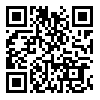Mon, Dec 15, 2025
Volume 8 - Special Issue
Iran J Neurosurg 2022, 8 - Special Issue: 0-0 |
Back to browse issues page
Download citation:
BibTeX | RIS | EndNote | Medlars | ProCite | Reference Manager | RefWorks
Send citation to:



BibTeX | RIS | EndNote | Medlars | ProCite | Reference Manager | RefWorks
Send citation to:
Javadi S A H, Mosallami Aghili S M, Javadi A M, Raminfard S. Methods to Improve Fiber Reconstruction at DTI-Based Tractography in the Area of Brain Tumor: Case Illustration and Literature Review. Iran J Neurosurg 2022; 8 : 2
URL: http://irjns.org/article-1-300-en.html
URL: http://irjns.org/article-1-300-en.html
Seyed Amir Hossein Javadi *1 

 , Seyed Morsal Mosallami Aghili2
, Seyed Morsal Mosallami Aghili2 

 , Amir Mohammad Javadi3
, Amir Mohammad Javadi3 

 , Samira Raminfard4
, Samira Raminfard4 




 , Seyed Morsal Mosallami Aghili2
, Seyed Morsal Mosallami Aghili2 

 , Amir Mohammad Javadi3
, Amir Mohammad Javadi3 

 , Samira Raminfard4
, Samira Raminfard4 


1- Department of Neurosurgery, Imam Khomeini Hospital Complex, Tehran University of Medical Sciences, Tehran, Iran. , javadi1978@yahoo.com
2- Department of Neurosurgery, Imam Khomeini Hospital Complex, Tehran University of Medical Sciences, Tehran, Iran
3- Noor Ophthalmology Research Center, Noor Ophthalmology Hospital, Tehran, Iran.
4- Neuroimaging and Analysis Group, Research Center for Molecular and Cellular Imaging, Tehran University of Medical Sciences, Tehran, Iran.
2- Department of Neurosurgery, Imam Khomeini Hospital Complex, Tehran University of Medical Sciences, Tehran, Iran
3- Noor Ophthalmology Research Center, Noor Ophthalmology Hospital, Tehran, Iran.
4- Neuroimaging and Analysis Group, Research Center for Molecular and Cellular Imaging, Tehran University of Medical Sciences, Tehran, Iran.
Abstract: (3270 Views)
Background and Aim: Diffusion Tensor Imaging (DTI)-based tractography can help us visualize the spatial relation of fiber tracts to brain lesions. Several factors may interfere with the procedure of diffusion-based tractography, especially in brain tumors. The current study aims to discuss several solutions to improve the procedure of fiber reconstruction adjacent to or inside brain lesions. Illustrative cases are also presented.
Methods and Materials/Patients: The paper is a narrative review of methods that can improve DTI-based fiber reconstruction in the area of brain tumors. To provide up-to-date information, we briefly reviewed related articles extracted from Google Scholar, Medline, and PubMed.
Results: We proposed five techniques to improve fiber reconstruction. Technique 1 is a very low Fractional Anisotropy (FA) application. Technique 2 includes resampling techniques, such as q-ball and High Angular Resolution Diffusion Imaging (HARDI). Technique 3 is the reconstruction of fiber tracts by defining the separated Region of Interest (ROIs). Technique 4 explains the selection of the ROIs according to functional Magnetic Resonance Imaging (fMRI) since the anatomical configuration is distorted by neoplasm. Technique 5 consists of using unprocessed images for preoperative planning and correlation with the clinical situation.
Conclusion: DTI tractography is highly sensitive to noise and artifacts. The application of tractography techniques can improve fiber imaging in the area of brain tumors and edema.
Methods and Materials/Patients: The paper is a narrative review of methods that can improve DTI-based fiber reconstruction in the area of brain tumors. To provide up-to-date information, we briefly reviewed related articles extracted from Google Scholar, Medline, and PubMed.
Results: We proposed five techniques to improve fiber reconstruction. Technique 1 is a very low Fractional Anisotropy (FA) application. Technique 2 includes resampling techniques, such as q-ball and High Angular Resolution Diffusion Imaging (HARDI). Technique 3 is the reconstruction of fiber tracts by defining the separated Region of Interest (ROIs). Technique 4 explains the selection of the ROIs according to functional Magnetic Resonance Imaging (fMRI) since the anatomical configuration is distorted by neoplasm. Technique 5 consists of using unprocessed images for preoperative planning and correlation with the clinical situation.
Conclusion: DTI tractography is highly sensitive to noise and artifacts. The application of tractography techniques can improve fiber imaging in the area of brain tumors and edema.
Article number: 2
Type of Study: Review |
Subject:
Brain Tumors
Send email to the article author
| Rights and Permissions | |
 |
This work is licensed under a Creative Commons Attribution-NonCommercial 4.0 International License. |



